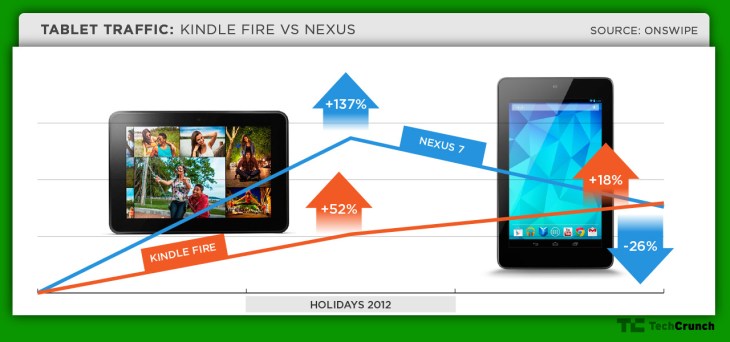Last year, Onswipe noticed that despite considerable growth for the Kindle Fire during its first holiday sales season, interest seemed to drop off pretty quickly a month or so after all the gifts were unwrapped. This year, it wanted to see if the same held true for two leading Android-based tablet platforms, to see if it couldn’t back up the Apple claim that most tablets using Google’s mobile OS quickly fall into disuse.
The results saw a considerable jump for both Kindle Fire and Nexus 7 tablet devices during the year’s peak shopping season, with Onswipe traffic from Fire tablets jumping 51.84 percent immediately following the holiday, and the Nexus 7 experiencing a 136.77 percent increase in share. One month later, the Nexus 7 had already shed 25.68 percent of the traffic it gained from the holiday, however, a number which Onswipe CEO Jason Baptiste called “significant.”
The Kindle Fire, however, actually gained traffic, adding 18.01 percent on top of its existing growth one month after its holiday bump. Baptiste says this is a sign that consumers are responding better to the latest generation of Kindle Fire hardware, in part because of new device designs like the Kindle Fire HD, and in part because of an improved software experience and media ecosystem from Amazon. Google, he says, needs to learn from the Kindle Fire’s example and focus on improving its next-gen Nexus slates, both in terms of hardware specs and software experience, in order to accomplish the kind of sustained traffic increase next year that the Fire managed this time around.
The big winner remains the Apple iPad, however, as despite growth by Android tablets from major rivals, the iPad retains a massive 91.96 percent of overall tablet traffic, meaning it has “nothing to worry about” in the foreseeable future in terms of challenges from other makers, according to Baptiste.
